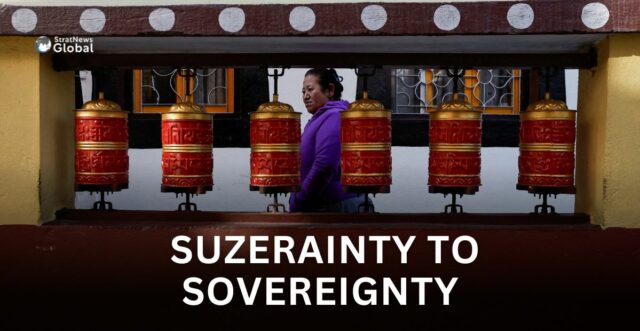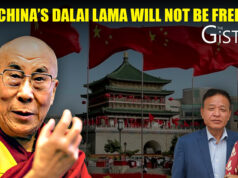The relationship between China and Tibet has been a subject of dispute and controversy for centuries. Since China’s annexation of Tibet in 1950, the Chinese government has claimed that Tibet has always been part of China. However, this claim is deeply contested by many scholars, historians, and international bodies.
China’s Claim: Tibet Has Been Part of China Since Antiquity
For many years, the Chinese government has argued that Tibet has always been a part of China, dating back to the Tang Dynasty. This argument is crucial for China’s justification of its actions in Tibet, particularly the annexation in 1950. The Chinese government asserts that Tibet was under Chinese control for centuries, and thus its takeover of Tibet in 1950 was merely the ‘reunification’ of its ancient territory.
However, this historical connection is difficult to prove. While Tibet did have some political and cultural ties with China during certain periods, it was never fully integrated into China for most of its history. Tibet maintained a distinct identity, with its own government, culture, and religious practices.
Changing Chinese Narrative
Over time, China has refined its argument, now claiming Tibet was officially incorporated into China during the Yuan Dynasty under Kublai Khan. However, this claim is contentious. The Mongols maintained a spiritual, not political, relationship with Tibetan leaders under the Cho-Yon (Priest-Patron) system and did not integrate Tibet into their central administration.
Similarly, during the Qing Dynasty, Tibet’s spiritual leaders engaged with Qing emperors, but Tibet remained largely autonomous. China only attempted direct control in 1908, prompting the 13th Dalai Lama’s exile. After the Qing collapse in 1912, Tibet reaffirmed its independence in 1913. A similar pattern can be observed in China’s approach to Arunachal Pradesh.
“China not only claims Tibet as its own, it also claims that India’s Arunachal Pradesh is Southern Tibet or ‘zangnan’” says Dr. Sriparna Pathak, Associate Professor at O.P.Jindal Global University. In recent years, China has repeatedly attempted to reinforce its territorial claims through unilateral actions, such as renaming places within Arunachal Pradesh.
Tibet’s Independence From 1913 to 1950
In 1913, the 13th Dalai Lama expelled Chinese troops and officials from Tibet. For the next 37 years, Tibet functioned as an independent nation, free from Chinese control. It established its own government, conducted its own foreign relations, and made decisions without interference from China.
During this period, Tibet was recognized as an independent state by some foreign countries. The British Empire, for example, had a treaty with Tibet in 1904 that recognized its independence. Similarly, many nations treated Tibet as an independent entity until 1950, when China sent in the People’s Liberation Army (PLA) to ‘reunify’ Tibet with China.
International Law
China continued to claim that it was simply ‘reuniting’ Tibet with the rest of China. In fact, China’s 1992 White Paper on Tibet referred to Tibet as being ‘owned’ by China, as if Tibet was already an inherent part of the country before the 1950 invasion. This language is a clear attempt to legitimize China’s actions in Tibet and to shift the narrative from one of colonial expansion to one of peaceful reunification.
Dr. Pathak states: “While there has been widespread condemnation of the violation of Ukrainian sovereignty…..there was no such response to China’s so-called peaceful liberation of Tibet. ”
“The UN has expressed concerns about the situation in Tibet and has called for the respect of human rights and fundamental freedoms. However, the UN has not taken any binding actions to recognize Tibet’s independence or to condemn China’s occupation”, she added.
The Tibetan Struggle and the Chinese Narrative
China argues that its rule has modernized Tibet, replacing an oppressive theocracy with economic development. Officials claim Tibetans suffered under “serfdom” before China’s “liberation.” However, Tibetans and human rights groups counter that this narrative overlooks decades of political and cultural repression, including restrictions on religion, language, and traditions. The Dalai Lama fled to India in 1959 after a failed uprising, and many Tibetans continue to seek greater autonomy or independence.
Jaydev Ranade, President at Centre for China Analysis and Strategy states: “The Chinese view is obviously that [Tibetan Buddhism] cannot [coexist with the Communist system]. That is why they’re telling all the monks and nuns to adapt Tibetan Buddhism to socialism with Chinese characteristics, and to ‘sinicize’ Tibetan Buddhism.”
It underscores the fundamental conflict between religious freedom and state control in Tibet.
He further explained that “the Chinese also emphasize that Tibetans must be patriotic and must not owe allegiance to anyone else other than the Chinese Communist Party. So that brings in a clear conflict of interest between the Dalai Lama and the Chinese government.”
Dr. Pathak said: “A copy of the rules, published on the website of the United Front Work Department states, “No organization or individual may use religious activity sites to conduct activities that endanger national security, disrupt social order [or] damage national interests”.
Tibet and Broader Territorial Conflicts
China’s occupation of Tibet also raises broader concerns about territorial integrity and the enforcement of international law. Ranade noted that China has used similar strategies in other disputed regions:
“We have seen what has happened in Hong Kong and we have also seen what is happening in the South China Sea, where China made claims and then began enforcing them step by step. Today, they are virtually dominating the South China Sea without any tangible objection by the international community.”
This pattern of territorial expansion raises concerns about Taiwan’s security, as well. He added, “That puts Taiwan in a precarious situation and increases its vulnerability. A lot depends on how the US and international community respond in case China tries something.”
Can International Law Challenge China’s Control Over Tibet?
The question of whether international law can be used to challenge China’s control over Tibet remains complex. Mr. Ranade observed, “International law can be used to challenge China’s occupation of 1950, but even if they succeed, it would be difficult to enforce.”
“Tibet had its own currency, its own ruler, and all the attributes of a sovereign power, but few countries officially recognized it as an independent state.” This lack of recognition complicates Tibet’s legal standing in the present.
An Unresolved Issue
As Dr. Pathak observes: “If China’s occupation of Tibet since 1950 or of Xinjiang has not been challenged by any country in the international order, even in 2025, there are bleak hopes that any country would challenge China’s occupation of other territories”
The future of Tibet remains in a state of uncertainty, shaped by geopolitical shifts and China’s internal policies. What is crucial here is the resilience of the Tibetan people in preserving their cultural and political identity. More than ever, the conscience of the world must awaken to China’s injustices in Tibet and restore its sovereignty.





